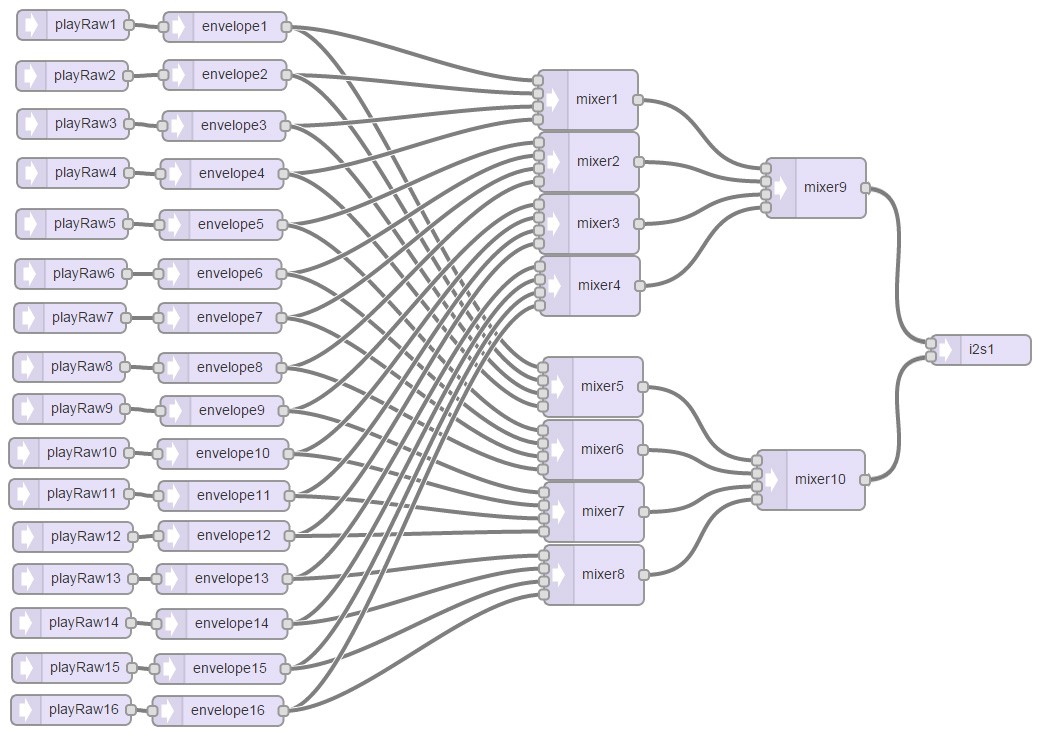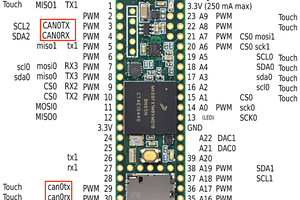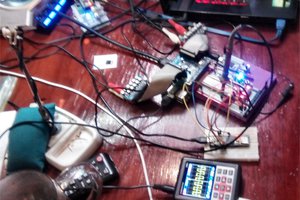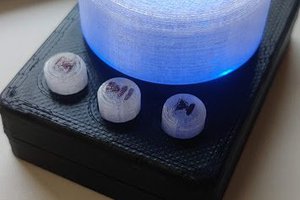Inspired by the Akai MPC, and the MIDI Fighter, I embarked upon the construction of a standalone hybrid.
It will feature a 96 pulse-per-quarter-note sequencer, with quantize and swing functions. It will also perform as a MIDI device both sending and receiving MIDI commands, allowing it to be sequenced by Cubase, Reaper, Ableton or any other MIDI compatible device.
The specific function set is likely to expand within the limits of the hardware, but for now, lets say it's just a sampler/looper/drum machine.
The project utilises a Teensy 3.1, which is an arduino-compatible embedded board. It's an arduino on steroids, utilising a 32bit Cortex M4 chip, with hardware DSP, and clock speeds of up to 144Mhz. Available RAM is 64k, Sketch RAM is 256k.
Added to that is the Teensy Audio board, not technically a shield, but a stacking bolt on to the Teensy 3.1. It features a 44Khz 16bit D/A chip with Headphones, Lineout, Line in, Mic in and an SDcard port to boot. It also features an optional 16Mbyte flash ROM chip which is key to the project's success.
Other bolt on hardware includes an i2c Adafruit LCD display @ 128x64 with RGB backlight, a PS/2 MiniPAC 32 way button interface, along with 16 backlit arcade buttons featuring Cherry D44X microswitches. The microswitch of champions.
On top of this, there are numerous transport and control push buttons, a cross fader for modulation and effects, 4 potentiometers and a rotary encoder for menu operation. I also hope to add a piezo sensor to detect the power a button is struck, but this might not work very well :)
Add to all of this the excellent Audio Library from pjrc.com, tieing it all together.
I'm pulling together an awful lot of ingenious and powerful software and hardware, provided by others, to make a whole that is larger than the sum of its parts. :)
 Jonathan Payne
Jonathan Payne






 J. M. Hopkins
J. M. Hopkins
 Patrick
Patrick
 Colin Russell-Conway
Colin Russell-Conway
Considering releasing all project info to public cause of the stall?